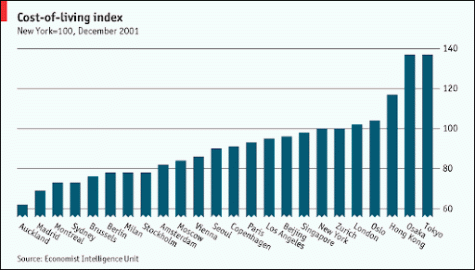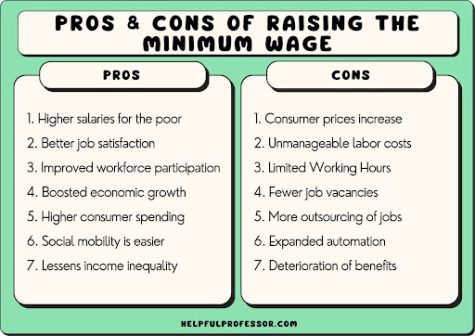Minimum wage provides minimal support
Editorial
People of America! We need to address the issues with our minimum Wage gaps! After sitting in class and learning about minimum wage, I am absolutely appalled and outraged. Our cost of living to minimum wage ratio is too cheap for any human being to keep up with, to pay things on time. We are overworked and underpaid. In any part of the country, full-time workers who make minimum wage are unable to afford basic essentials including daycare, housing, transportation, food, and healthcare.
The minimum wage in the U.S. has not been a living wage, leading to families being unable to afford basic necessities. The federal minimum wage was set at 25 cents per hour in 1938 and rose to $7.25 per hour in 2009. 27 states and a number of cities have raised the minimum wage to exceed the federal mandate. By 2026, only 10 states will be at or above $15 per hour, but alas, this is still not enough.

Here is a rise in living expenses. Many contend that the cost of living is still more than the minimum wage offers, particularly for those supporting a family, even if minimum wage amounts have increased across a number of states.
Inflation may also affect living expenses, which can exceed salaries. To add, one of the most enduring aspects of the American labor market is the racial wage gap, but compared to the gender wage gap between men and women workers, which is largely explained by differences in occupational segregation, a greater proportion of the specific wage gaps between Black men and White men and Black women and White women are “unexplained” by the so-called human capital model or are perceived by economists as the result of overt discrimination.
It is evident that there is a persistent pay discrepancy between Black and White workers across the wage spectrum, with the gap widening towards the top of the scale where Black people are shut out of high-paying positions.
So what can we do?
Some are setting the standard, and many businesses are doing it independently. Legislators could suggest a tax reduction for people making $15 per hour or less to qualify as tax exempt instead of raising the minimum wage to that amount. They would effectively receive a pay raise of $3 per hour as a result.
Historically, some social activists who opposed the market or pricing system of wage labor regarded syndicalism, worker cooperatives, workers’ self-management, and workers’ control as potential alternatives to the existing wage system.
Workers are entitled to a federal minimum wage that is regulated by the Fair Labor and Standards Act, which was passed by Congress in 1938. The federal minimum wage was recently increased to $7.25 in 2009, but stayed unaltered as living costs rose over the ensuing ten years. To raise the federal minimum wage to $15 by 2025, the Raise the Wage Act of 2021 was launched. The bill’s supporters calculated that, according to data from the Economic Policy Institute, or EPI, the proposed wage rise would benefit 21% of the workforce and add $3,300 per year to the household budgets of cashiers, fast-food employees, and other service workers.


Sources:
https://www.statista.com/topics/768/cost-of-living/#dossier-chapter2




